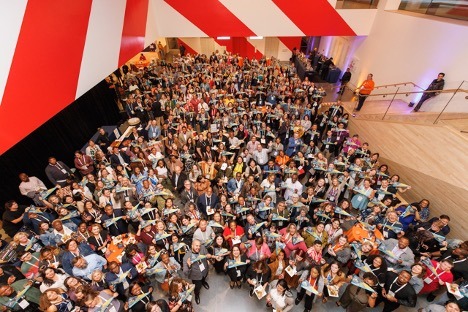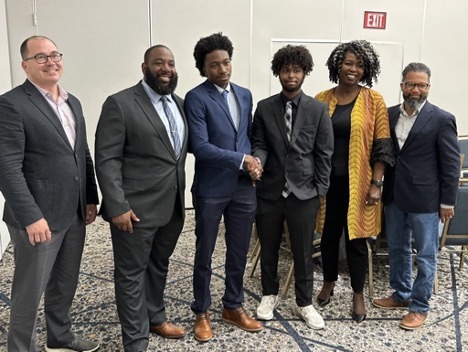When StriveTogether President and CEO Jennifer Blatz opened the 2023 StriveTogether Convening last month in San Francisco, she laid out a new collective vision for the Strive network: to put 4 million more young people on a path to economic mobility by 2030.
For the nearly 650 network members in attendance that week, including members of the Generation Next coalition there in person or watching the livestream, the goal felt fittingly bold—and achievable. As Blatz shared, across the country StriveTogether members and coalitions are making lasting collective impact that is truly moving the needle for kids in their communities.
She highlighted the Promise Partnership of Salt Lake (the destination for next September’s Strive convening), which has worked with the mayor to establish a city office focused on cradle-to-career efforts, a true measure of systems change. She also lifted up a local effort: Northfield Promise dramatically expanded access to state child care assistance funds, and built an active network of parent advocates here in Minnesota.

Opening night at the SFMOMA: The network that strives together celebrates together

“How do we know what young people want?”
As we know through our work, the how is just as critical as the what. The next morning’s plenary, “Activating Youth Leadership and Paths to Opportunity,” stressed the importance of lifting up youth voice across the StriveTogether network. As Dr. Tim Lampkin of Higher Purpose Co. put it plainly, “How do we know what young people want? Go ask them…A lot of young people don’t know you’re building something for them because they’re not included. You can’t talk about young people if young people aren’t in the room.”
As you’ll read in our accompanying blog post, Minnesota’s convening contingent was proudly represented by two student leaders from Minneapolis College and Saint Paul College. Om Harris and Mahad Abdishakur made their voices heard throughout the “Culturally Sustaining Practices: An Ecosystem of Student & Administrative Collaboration” session, sharing their perspectives as BIPOC student leaders taking part in Saint Paul College’s iLEAD fellowship program and Minneapolis College’s Bridging the Equity Gap program.
Equipping students of color to have a seat at the table in steering their cradle-to-career journey has been front and center for Generation Next’s coalition. At our Leadership Council retreat, we revised Generation Next’s guiding principles to specifically name racial equity as a goal and focus, along with a stronger commitment to bringing in BIPOC youth and community voice.
Centering the voices of diverse youth also emerged as a theme in Erik Stegman’s presentation on the convening’s opening morning. As CEO of Native Americans in Philanthropy, Stegman is leading a movement to “increase funding and accountability to Indigenous-led organizations, grassroots movements, and Tribal Nations.”
Anchoring this approach is the organization’s Native Youth Grantmakers program, which empowers Indigenous youth ages 18-24 to have a voice in grantmaking decisions that affect their communities. As Stegman put it, the program puts Indigenous youth in the room with foundations, “where they can understand that their voice matters in philanthropy, and that this is another system of power where they should be at the table.”
Reimagining systems from neighborhood to national
The convening’s final day opened with a panel focused on Mission Promise Neighborhood, an initiative of great interest to our team, given Generation Next’s close collaboration with Northside Achievement Zone and Saint Paul Promise.
Mission Economic Development Agency Chief Strategy Officer Richard Raya discussed Mission Promise with StriveTogether Chief Advancement Officer Colin Groth, explaining how San Francisco’s Mission district has seen success in greater kindergarten readiness and graduation rates. Just as critically, families in the area have also gained access to reliable healthcare and affordable housing. As Groth put it, “We have to reimagine our systems from neighborhood to national and invest in the infrastructure that brings this to life.”

